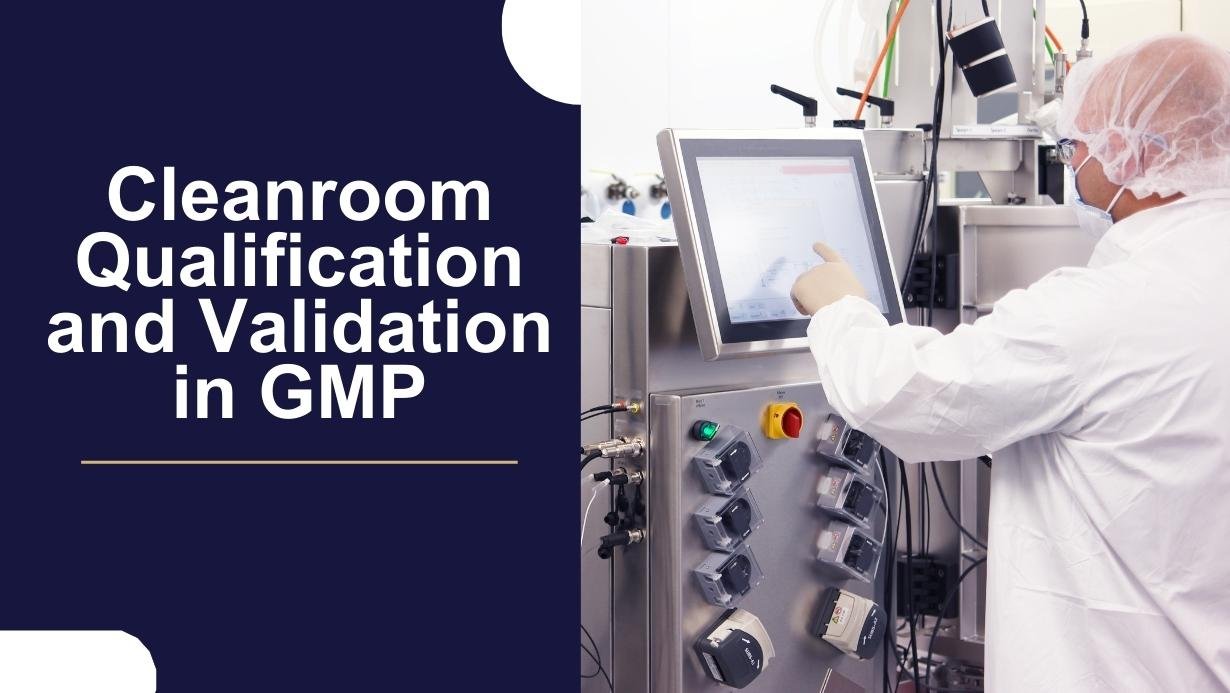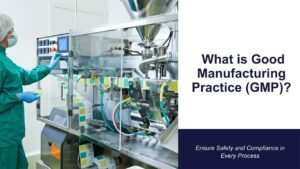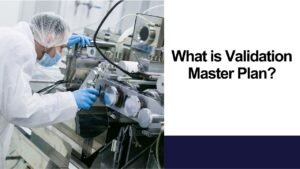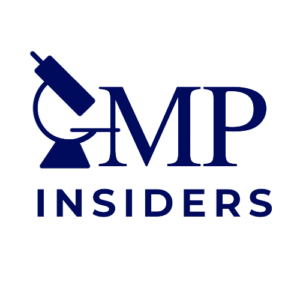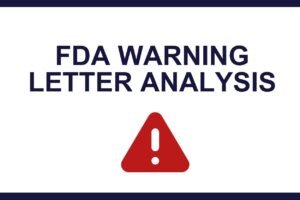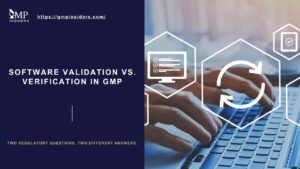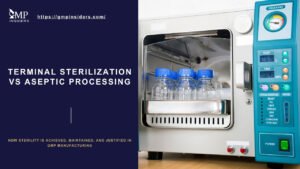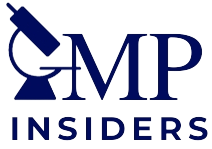Cleanrooms are controlled environments, designed to reduce the presence of airborne particles and contaminants that could compromise sensitive processes or products. Validation and qualification of cleanrooms involve a comprehensive process, ensuring that design, facilities, and operational parameters meet stringent user requirements and regulatory standards. This is vital for maintaining product integrity and adherence to cleanroom protocols, which, if not correctly managed, can lead to costly adjustments post-construction.
The article will explore the essential steps in cleanroom qualification and validation, stressing the importance of a validation master plan, risk assessments, and regulatory compliance in the qualification process.
GMP and Its Impact on Cleanroom Design and Qualification
Cleanrooms are GMP-controlled environments designed to maintain specific levels of air purity, temperature, humidity, differential pressure, and airflow. These parameters are meticulously controlled and managed to prevent contamination that could compromise product quality.
Key GMP Requirements for Cleanroom Design:
- Surface Materials: GMP mandates smooth, waterproof, easy-to-clean, and rigid internal surfaces to minimize the risk of contamination. This requirement ensures that cleanrooms can be effectively sanitized and that there are fewer crevices where contaminants can accumulate.
- Cleanliness Levels: Unlike the general ISO 14644 standards, Annex 1 specifies two distinct cleanliness levels for cleanrooms: “at rest” (unoccupied) and “in operation” (occupied with processes underway). This distinction underlines the dynamic nature of cleanroom environments and the need for rigorous monitoring and control processes.
- Door Design: To further minimize contamination risks, GMP guidelines stipulate that cleanroom doors must be seamless, easily cleanable, and resistant to cleaning agents. Sliding doors are discouraged due to their inherent gaps and recesses that are challenging to clean effectively.
Monitoring and Compliance:
- Continuous Monitoring: GMP regulations require stringent and continuous monitoring of cleanrooms to maintain an ongoing awareness of environmental conditions. This includes tracking both viable (living microorganisms) and nonviable (non-living particles) contamination to ensure that cleanrooms meet the required standards at all times.
- Patient Safety and Accuracy: The ultimate aim of GMP cleanroom regulations is to protect patient safety by ensuring that products are manufactured in environments that foster accurate, effective, and repeatable results. This focus on patient safety emphasizes the critical role of cleanrooms in the production of pharmaceuticals and medical devices.
Cleanroom Qualification: GMP vs. cGMP
While GMP focuses on the design, build, and operation of cleanrooms, cGMP (current Good Manufacturing Practices) encompasses the use of up-to-date technologies and systems to comply with GMP standards. Achieving GMP compliance requires the implementation of GMP-grade materials from well-characterized sources, underscoring the importance of quality in all aspects of cleanroom operation.
The European Union’s update to the GMP for Medicinal Products for Human and Veterinary Use – Annex 1 in 2022, focusing on Quality Risk Management (QRM) through a Contamination Control Strategy (CCS), illustrates the evolving landscape of cleanroom qualification. This approach highlights the necessity for a detailed and comprehensive strategy to manage contamination risks, further emphasizing the critical role of GMP in guiding cleanroom design and operation.
RELATED ARTICLE: GMP vs cGMP
Why Do We Qualify Cleanrooms?
Cleanroom qualification in the Good Manufacturing Practice (GMP) industry, particularly within pharmaceuticals, is a critical process designed to ensure that these specialized environments meet stringent regulatory standards and guidelines for cleanliness and controlled conditions. The primary reason for qualifying cleanrooms is to verify that the space is capable of maintaining the required levels of contamination control.
This involves assessing the performance of air filtration systems, temperature, humidity controls, and the effectiveness of cleaning protocols. Qualification activities ensure that the cleanroom environment does not adversely affect the safety, quality, and efficacy of the products being manufactured or handled within it.
By systematically validating the cleanroom’s performance, companies can minimize the risk of product contamination, meet regulatory requirements, and protect consumer health, thereby maintaining trust and integrity in the pharmaceutical industry.
Core Components of Cleanroom Qualification:
Air Handling Units (AHU) Control:
- Delivers filtered air into the cleanroom and removes particulates.
- Maintains pressure differentials within the facility to prevent contamination.
Validation Guide Compliance:
Adheres to ISO14644 standards, covering a range of parameters including room temperature, % relative humidity, viable and non-viable particulate, pressure differential, HEPA filter integrity, and more.
Additional Criteria:
Encompasses building finishes and structure, air filtration, location of air terminals, directional airflow, material and personnel flow, gowning procedures, equipment movement, process type, outside air conditions, occupancy, product type, and cleaning SOPs.
Objectives of Cleanroom Qualification:
- Compliance: Ensures adherence to regulatory requirements, industry standards, and guidelines such as ISO, GMP, and IEC.
- Quality Assurance: Guarantees the quality, reliability, and consistency of the cleanroom, essential for product integrity and safety.
- Operational Efficiency: Contributes to improved operational efficiency, optimized workflows, and enhanced productivity, crucial for maintaining competitive advantage in industries such as pharmaceuticals, biotechnology, and medical devices.
Cleanroom Qualification and Validation Lifecycle
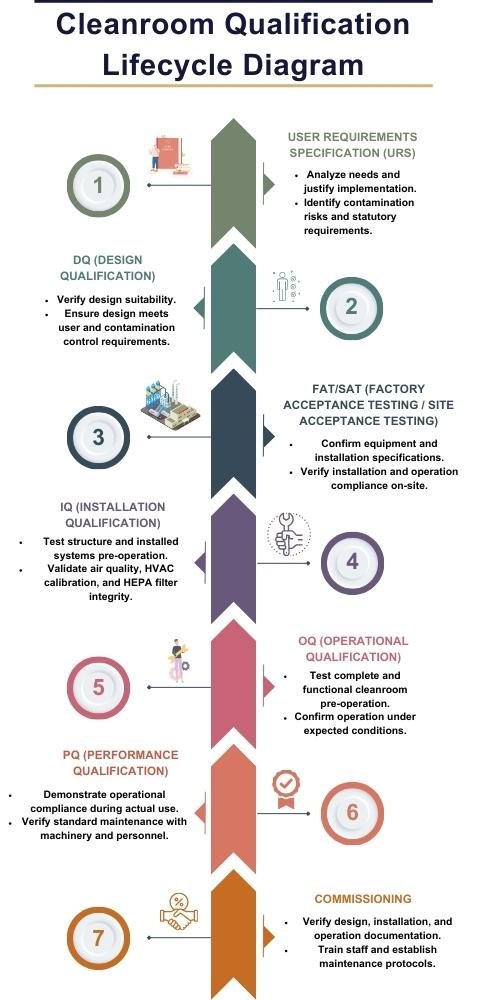
The stages of cleanroom qualification are meticulously designed to ensure that cleanrooms meet the necessary standards for contamination control and regulatory compliance. This process is comprehensive, involving several critical stages:
User Requirements Specification (URS)
- Analyzing the need for a cleanroom and justifying its implementation.
- Identifies contamination risks to products, processes, people, and the environment.
- Includes statutory requirements, ensuring compliance with local, national, and international laws.
- Addresses relevant regulations and standards from organizations like ISO and FDA.
- Considers business-related aspects, including costs, operational expenses, and ROI (Return on Investment).
- Foresees future needs regarding production volumes, new processes, regulatory changes, and technology advancements.
RELATED ARTICLE: How to Create User Requirement Specification (URS)
Design Qualification (DQ)
- Verifying that the design is fit for its intended purpose.
- Involves conceptual design, basic design, and detailed design stages.
- Designing the cleanroom with an effective contamination control strategy for construction, testing, operation, maintenance, and life cycle.
- Bridges URS and construction, ensuring the proposed design meets requirements.
- Includes design reviews and approvals at each stage to ensure compliance and feasibility.
RELATED ARTICLE: Design Review (DR) and Design Qualification (DQ) in Pharma Industry
Factory Acceptance Testing (FAT) / Site Acceptance Testing (SAT)
- Ensures the installation performs as specified.
- Verifies installation completeness and performance parameters, including a classification test in accordance with ISO 14644-1.
- FAT ensures equipment meets specifications before shipment.
- SAT confirms installation complies with the design and operates as expected.
- Emphasizes construction in accordance with design, commissioning, and performance verification.
RELATED ARTICLE: FAT and SAT in GMP
Installation Qualification (IQ)
- Tests the cleanroom when built but not yet operational.
- Includes as-built testing to reflect supply air quality, HVAC calibration, P&ID loop verification, HEPA filter integrity test data review, critical equipment calibration status, and microbial contamination measurement for airborne and surface.
Operational Qualification (OQ)
- Tests the cleanroom when complete, functional, and ready to use but not yet operational.
- Involves at-rest testing to ensure thorough smoke testing of surfaces, installed filter system leakage and integrity testing, airflow tests, air pressure difference test, airflow direction test and visualization, microbial airborne and surface contamination, temperature measurement test, relative humidity test, recovery test, and containment leak test.
RELATED: Airflow Visualization Smoke Studies (AVS) in Cleanrooms
Performance Qualification (PQ)
- Demonstrates that the cleanroom has all required operational performance in place for a safe cleanroom application.
- Includes cleanroom classification at the in-operation state and determination of the microbial contamination level of the cleanrooms at the in-operation state.
- Involves conducting tests under typical operational conditions with machinery and personnel.
Cleanroom Commissioning
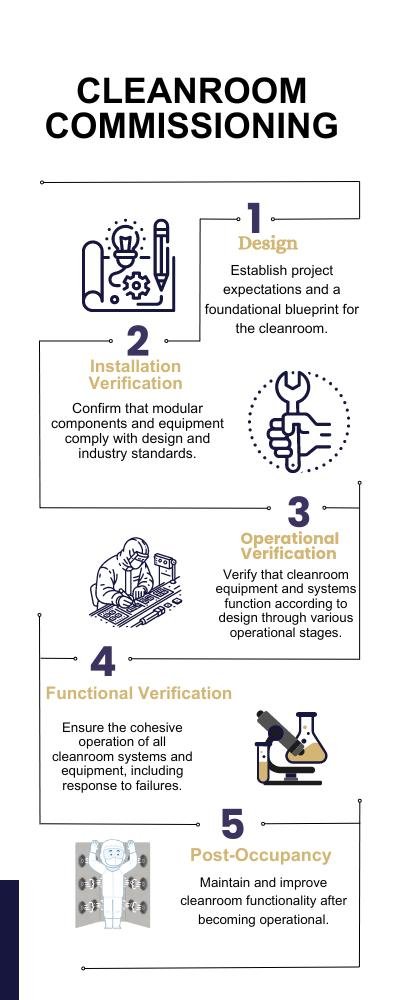
Commissioning a cleanroom is a comprehensive process that ensures the facility meets specific requirements and functions as intended before it is fully operational. This process is critical in industries where environmental control is crucial, such as pharmaceuticals, biotechnology, and medical device manufacturing.
1. Design
Objective: Set project expectations and establish a blueprint for the cleanroom.
Key Activities:
- Define the vision, requirements, goals, performance criteria, budget, and schedule.
- Create preliminary designs with considerations for applicable standards, codes, and regulations.
- Review and approve designs through stakeholder feedback.
2. Installation Verification
Objective: Ensure that modular components and equipment meet design and industry standards.
Key Activities:
Offsite:
- Verify materials and equipment against design intent and standards.
- Conduct factory acceptance testing.
Onsite:
- Perform site acceptance testing.
- Verify equipment and system startup protocols.
- Assemble the cleanroom according to protocols.
- Create maintenance manuals.
3. Operational Verification
Objective: Confirm that cleanroom equipment and systems operate according to design across different operational stages.
Key Activities:
- As-built Stage: Verify structure, mechanical, and electrical systems in an empty cleanroom.
- At-rest Stage: Ensure all components are correctly installed but not operational.
- Operational Stage: Test all components and systems in full operation, including operator interaction. Train staff on machinery and systems operation.
4. Functional Verification
Objective: Validate the integrated operation of cleanroom systems and equipment, including failure responses.
Key Activities:
- Verify integrated system operation according to design and operational sequences.
- Test the failure cascade to ensure systems fail as intended.
5. Post-Occupancy
Objective: Continue verification and improvement after the cleanroom is operational.
Key Activities:
- Conduct ongoing tests and maintenance.
- Perform end-of-warranty inspections and interviews with operators.
- Develop a recommissioning plan.
This structured approach to commissioning is essential for creating a cleanroom environment that not only meets initial design and operational requirements but also maintains its performance over time.
It involves significant planning, verification, and validation activities at each stage to ensure the cleanroom operates effectively, safely, and in compliance with relevant standards. Post-occupancy, the focus shifts towards maintaining the cleanroom’s performance and planning for future recommissioning, underscoring the ongoing nature of cleanroom management and optimization.
Cleanroom Monitoring
Cleanroom monitoring is an essential ongoing activity that ensures the operational integrity and compliance of the cleanroom environment post-release. The monitoring program is designed to continuously assess the cleanliness and controlled conditions of the cleanroom to prevent contamination of products and processes.
Annex 1 provides comprehensive guidance on differentiating operational environmental monitoring from cleanroom qualification (including cleanroom classification) and outlines the critical elements that should be included in the monitoring program. Some of the most important elements include:
Elements of Operational Environmental Monitoring Program
- Environmental Monitoring (Total Particle): Regular monitoring of total particle counts in the air is crucial to ensure that the cleanroom maintains the specified cleanliness class. This involves measuring the concentration of airborne particles of specific sizes (e.g., ≥0.5 µm and ≥5 µm) to detect any deviations from established limits.
- Environmental and Personnel Monitoring (Viable Particle): This aspect focuses on the monitoring of viable particles, which include bacteria, fungi, and other microorganisms. It encompasses both environmental (air and surfaces) and personnel (garments and practices) monitoring to identify potential sources of microbial contamination.
- Temperature, Relative Humidity, and Other Specific Characteristics: Controlling temperature and humidity within specified limits is vital for preventing conditions that could promote microbial growth or affect product quality. Monitoring may also include other specific characteristics relevant to the cleanroom’s purpose, such as differential pressure or air change rates.
- Aseptic Process Simulation (for Aseptically Manufactured Products Only): This involves conducting mock-up simulations of the aseptic process to assess the potential for microbial contamination under actual production conditions. This is especially critical for pharmaceuticals and other sterile products, where product safety directly impacts patient health.
RELATED ARTICLE: Environmental Monitoring in Pharma Industry
Requalification
Periodic requalification ensures that a cleanroom continues to meet the designated cleanliness and operational standards after its initial certification. This process is vital for the ongoing assurance of product quality and safety and for complying with industry regulations and guidelines.
The minimum tests for cleanroom requalification include:
- Cleanroom Classification (Total Particle Concentration): This involves measuring the concentration of airborne particles in the cleanroom to ensure it meets the specified classification standards (e.g., ISO 14644-1 Cleanroom Classification). Different classes of cleanrooms have different allowable particle concentrations.
- Integrity Test of Final Filters: High-Efficiency Particulate Air (HEPA) or Ultra Low Penetration Air (ULPA) filters are critical components in maintaining cleanroom air purity. The integrity test, often performed using a DOP/PAO test, ensures that these filters are functioning correctly and have no leaks.
- Airflow Volume Measurement: This test measures the total volume of air supplied or removed from the cleanroom to verify that it meets the designed air exchange rates, which are crucial for maintaining the cleanroom’s cleanliness level.
- Verification of Air Pressure Difference Between Rooms: Cleanrooms often operate under positive pressure to prevent the ingress of contaminated air. This test verifies that the differential pressure between adjacent areas or rooms is maintained according to design specifications.
- Air Velocity Test: This involves measuring the speed of air movement within the cleanroom. Proper air velocity is essential for ensuring that particulates are effectively removed and that there is a uniform distribution of filtered air across the room.
In addition to these tests, requalification should also be performed after any significant change in the cleanroom environment through the change management process. Changes that might trigger requalification include but are not limited to, modifications to the HVAC system, construction or renovation within or adjacent to the cleanroom, changes in cleanroom layout, or updates to the operational processes that could affect the cleanroom’s performance.
The requalification process should be well-documented, following defined procedures to ensure compliance with regulatory standards and to provide an audit trail for quality assurance purposes. Documentation should include the scope of the requalification, test procedures, results, and any corrective actions taken in response to the findings.
This systematic approach to requalification ensures that cleanrooms continue to operate effectively and safely, supporting the overarching goals of quality control and regulatory compliance in critical manufacturing and research environments.
Risk Assessment in Cleanroom Qualification
Risk assessment in cleanroom qualification is a critical step to ensure that cleanrooms operate efficiently and safely, minimizing the risks of contamination.
Validation and Identification of Risks: Validation plays a pivotal role in identifying potential issues and risks associated with cleanroom operations. This proactive approach helps mitigate risks that could lead to costly recalls, production delays, or customer dissatisfaction.
RELATED ARTICLE: Quality Risk Management in Pharma Industry
Essential Steps in Cleanroom Process Risk Assessment:
- Identification of Hazards: Recognizing potential sources of contamination and operational failures within the cleanroom environment.
- Evaluating Impact and Exposure: Assessing the potential impact of identified hazards on cleanroom operations and product integrity.
- Corrective and Preventive Actions: Implementing measures to eliminate or reduce the risk of contamination, including adjustments in operational protocols and equipment.
- Regular Review and Adjustment: Utilizing current monitoring data to make necessary adjustments to environmental monitoring regimes and risk mitigation strategies.
Key Considerations in Risk Assessment:
- Human Factors: Since humans account for 75-80% of particles found in cleanroom inspections, selecting appropriate cleanroom garments and implementing improved gowning protocols are crucial for mitigating contamination risks.
- Environmental Monitoring: Risk assessment tools aid in determining optimal locations and frequencies for environmental monitoring. Factors such as room temperature, humidity, presence of drains, and room occupancy are considered to ensure comprehensive contamination control.
- Contamination Control Strategy (CCS): Developing a CCS and monitoring human, product, equipment, and air movement within the cleanroom are vital steps in mitigating risks. This strategy should be supported by engaging training, investment in knowledge, and automation where possible, to minimize human error and contamination.
By adhering to these guidelines and employing a systematic approach to risk assessment, cleanroom operations can achieve higher levels of safety and efficiency. Implementing appropriate mitigation measures based on identified vulnerabilities and risks is essential for maintaining the integrity and performance of cleanrooms.
Challenges and Best Practices in Cleanroom Qualification
Challenges in cleanroom qualification often stem from a variety of sources, demanding a multifaceted approach to address them effectively. Key challenges include:
- Design Flaws and Inadequate Project Planning: These can lead to operational inefficiencies and increased costs due to the need for significant modifications post-construction.
- Equipment Malfunction and Non-compliance with Regulations: Such issues not only disrupt cleanroom operations but also pose risks to product integrity and safety.
- Lack of Qualified Personnel and Unforeseen Technical Issues: These can significantly delay the qualification process and impact the overall project timeline.
Best Practices for Overcoming Challenges
Comprehensive Documentation:
- Maintain accurate and meticulous records of the validation process, including test results, observations, deviations, corrective actions, and any changes made.
- Documentation serves as a critical tool for identifying and addressing issues promptly and efficiently.
Personnel Training and Gowning Protocols:
- Implement robust training programs covering microbiology principles, gowning, and cleanroom behaviour.
- Establish strict gowning protocols to minimize contamination from personnel, the highest source of airborne particulates, and microbial contamination risk.
- Limit the number of personnel in clean areas and require good personal hygiene practices.
Operational Controls and Environmental Monitoring:
- Control access to the cleanroom through a formal authorization program and ensure proper hand washing and sanitizing practices.
- Use air showers and pass-throughs for introducing new materials, and clean and sanitize supplies before transferring them into the cleanroom.
- Schedule repairs and maintenance during off-hours to minimize disruptions and perform them in isolation to prevent contamination.
FAQ: Cleanroom Qualification
What Is the V Model in Commissioning and Qualification?
The V model in commissioning and qualification is a framework that ensures a system’s functionality is tested against its original design specifications. It provides a structured approach to validating that the technical solution delivered meets the intended outcomes.
Can a Cleanroom Fail Qualification? What Happens Then?
Yes, a cleanroom can fail qualification if it does not meet the necessary standards. In such cases, the issues are identified, and corrective actions must be taken to address the deficiencies. The qualification process is repeated until the cleanroom passes all required tests.
What Technologies Are Used in Cleanroom Qualification?
Technologies used include particle counters, photometers for filter testing, anemometers for airflow measurement, and various sensors to monitor temperature, humidity, and pressure differentials.
Conclusion
Throughout the exploration of cleanroom qualification and its essential steps, we’ve underscored the significance of stringent standards and meticulous planning in ensuring the efficacy and compliance of cleanrooms across highly regulated industries.
The journey from conceptual design to certification, bolstered by a thorough risk assessment and adherence to GMP standards, plays a critical role in maintaining not only the integrity of sensitive manufacturing processes but also the safety and reliability of the end products.
This comprehensive approach to cleanroom validation serves as a testament to the importance of precision and rigour in environments where the slightest deviation may have far-reaching implications.

